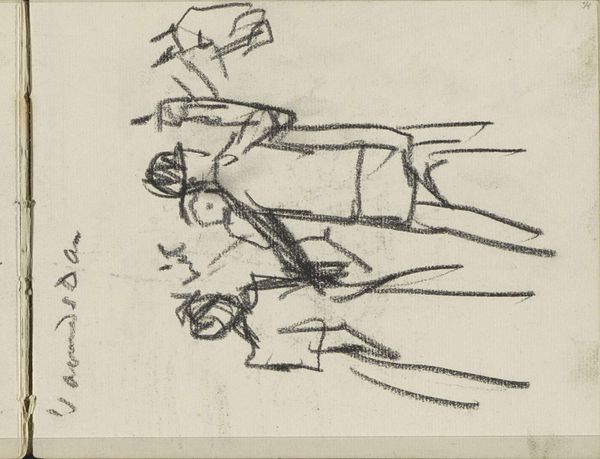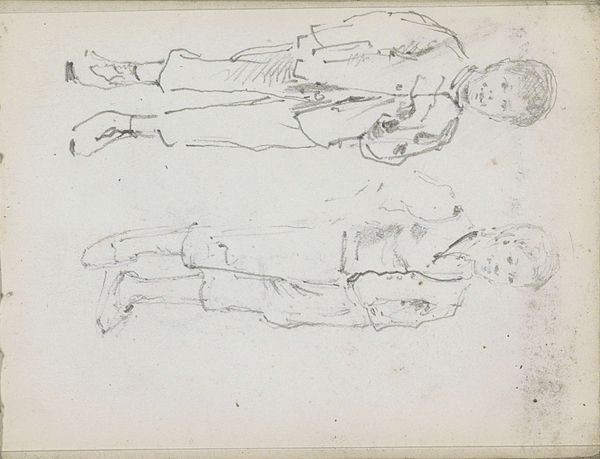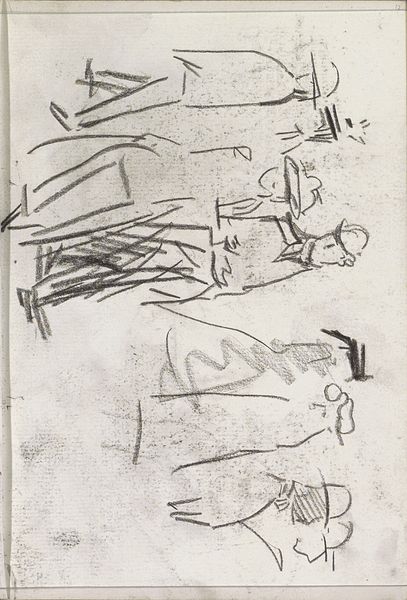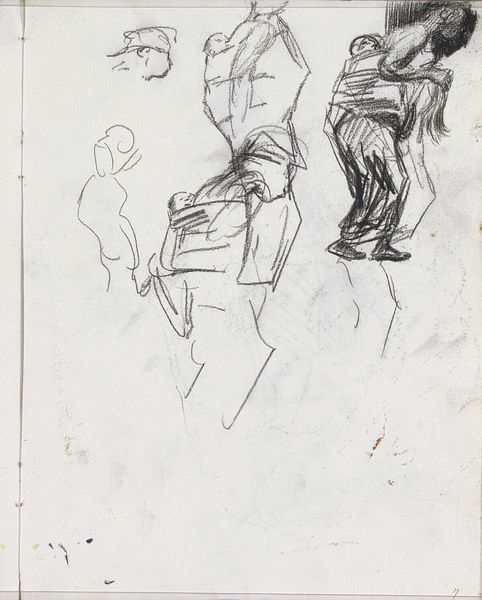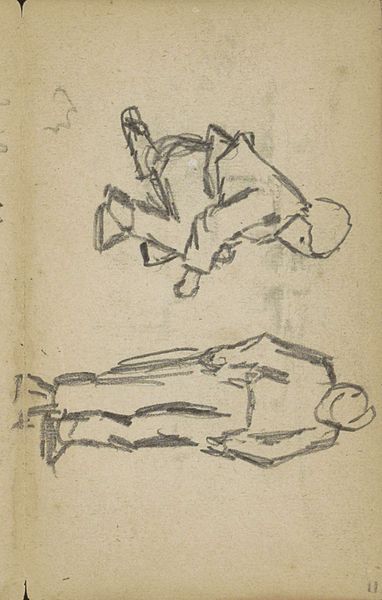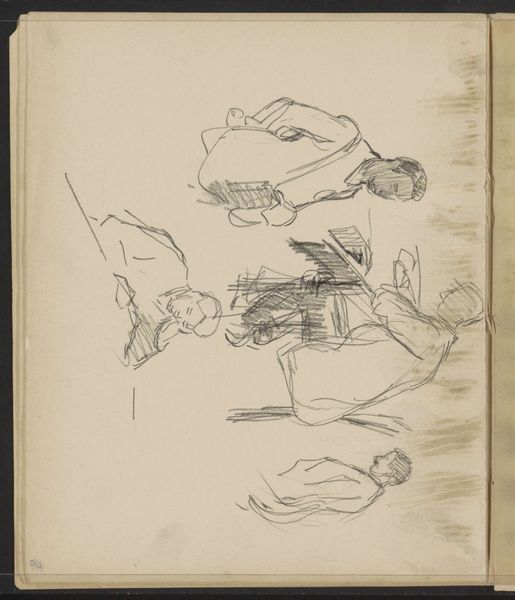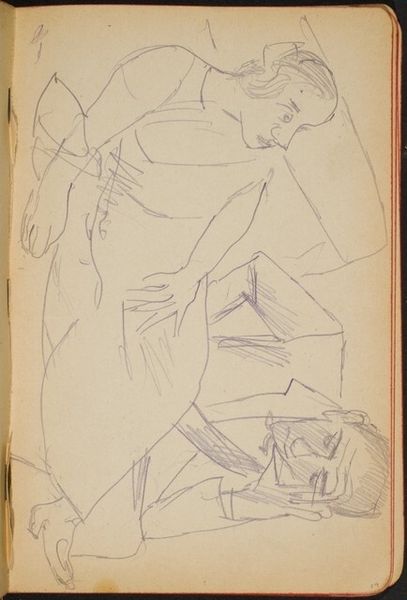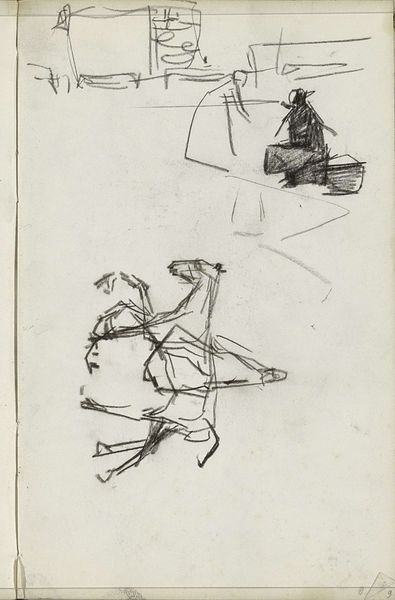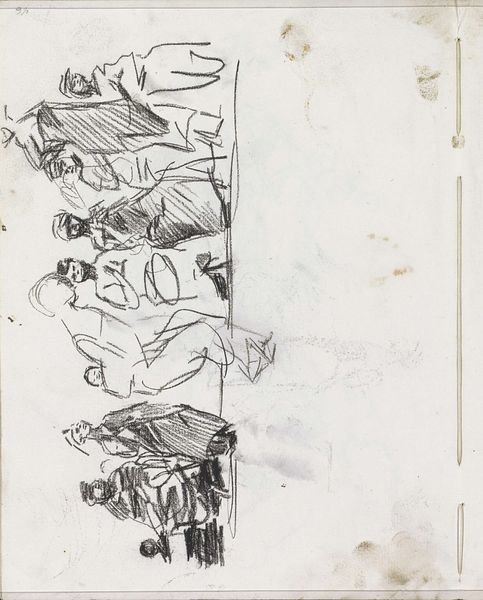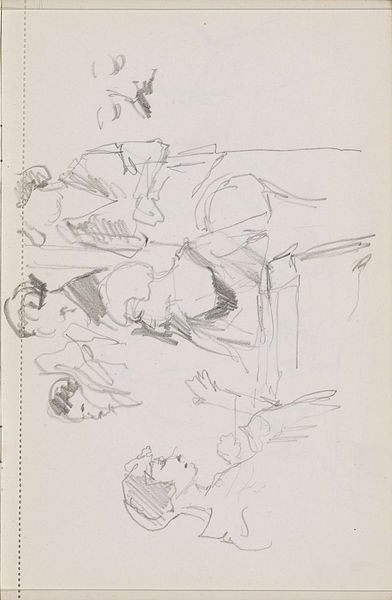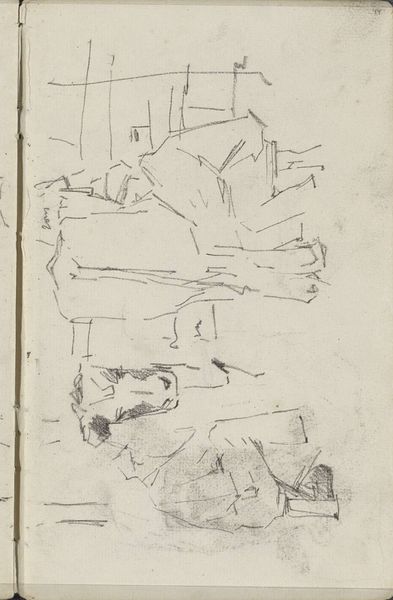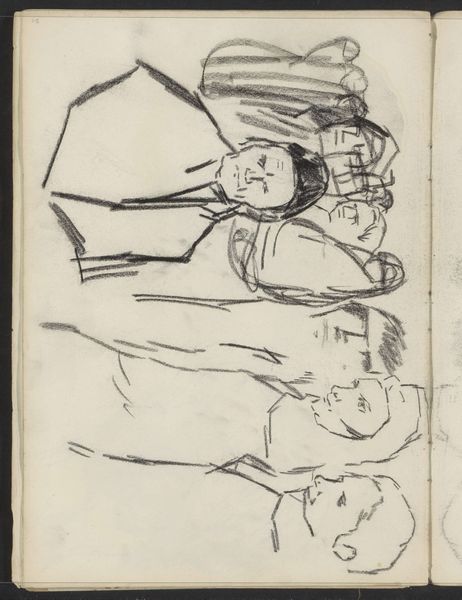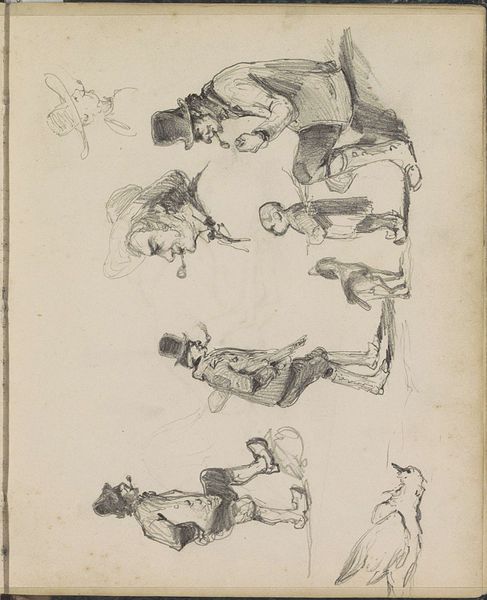
drawing, charcoal
#
portrait
#
african-art
#
drawing
#
amateur sketch
#
quirky sketch
#
incomplete sketchy
#
figuration
#
personal sketchbook
#
sketchwork
#
detailed observational sketch
#
pen-ink sketch
#
sketchbook drawing
#
charcoal
#
sketchbook art
#
initial sketch
Copyright: Rijks Museum: Open Domain
Editor: So this drawing is by Isaac Israels, titled "Afrikaanse figuren, mogelijk dansers," or "African figures, possibly dancers," and was made sometime between 1875 and 1934. It's charcoal and chalk on paper and held at the Rijksmuseum. It feels like a quick sketch, capturing movement and rhythm. What strikes you most about this work? Curator: I'm interested in how Israels, a white European artist, engaged with portraying African figures during a period of intense colonialism. The rapid, almost frenetic lines might reflect a fascination, but also potentially a superficial understanding of his subjects. Where was this sketch made, do you think? Editor: That's a good question. I’m not sure where he made the sketch. It definitely looks like something he would have sketched in the moment, from life. Curator: Right, and knowing where he observed these figures informs our interpretation. Were they performers in a European setting, for example? This context significantly shifts how we perceive Israels' representation and the power dynamics at play. Are these figures actively choosing to perform, or are they subjected to the gaze of the colonizer? Editor: So, it’s less about the aesthetic quality and more about the historical context and what Israels was trying to say, or perhaps, not say? Curator: Precisely. It's crucial to analyze what's absent: individual identities, nuanced emotions, or a deeper understanding of their cultural context. Israels gives us gesture, but what is omitted speaks volumes about the limitations and biases inherent in the colonial gaze. Editor: This makes me think about the ethics of representation and how art can inadvertently perpetuate stereotypes. I initially saw just a quick sketch, but now I see so much more to unpack. Curator: Exactly. By critically examining Israels’ work, we can have discussions about historical power imbalances and how artists have a social responsibility when representing different communities. Editor: It’s important to bring those colonial implications to light. I’ll never see sketches like these the same way again.
Comments
No comments
Be the first to comment and join the conversation on the ultimate creative platform.


